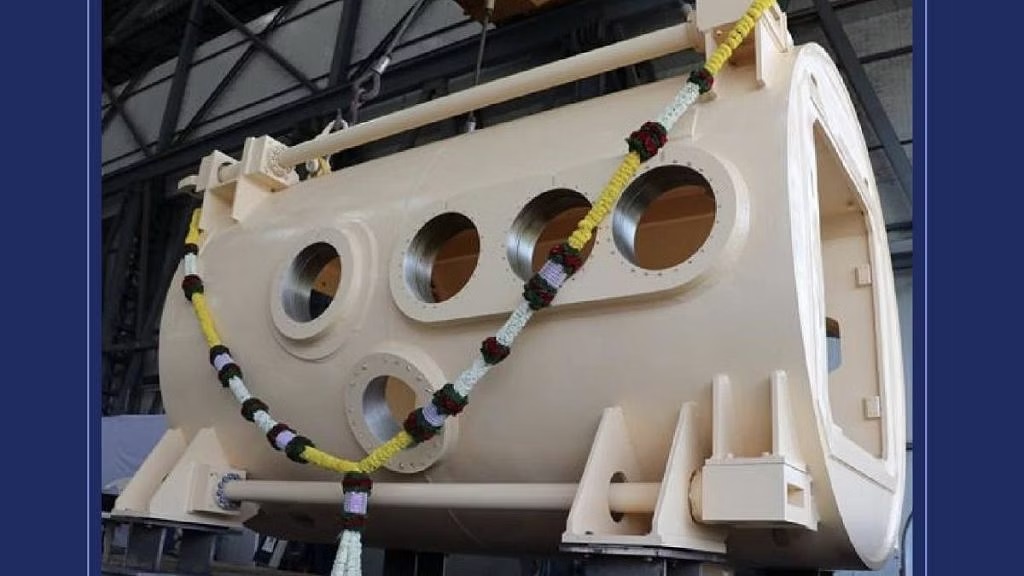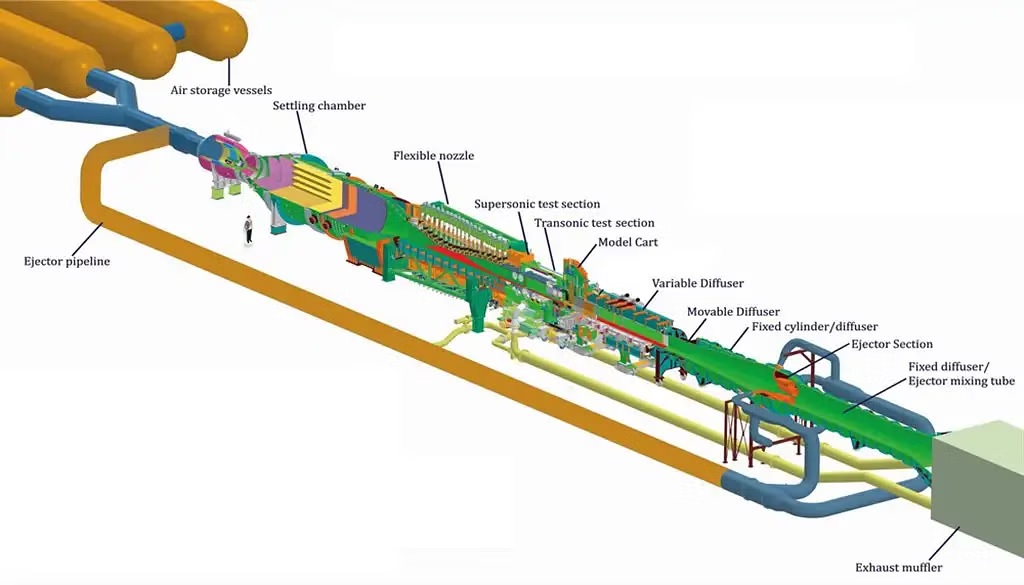ISRO Unveils Trisonic Wind Tunnel for Rocket Development

Space News ,India :- India marked a significant stride in space exploration as Prime Minister Narendra Modi revealed three new space projects, collectively costing Rs 1,800 crore. Among these, the inauguration of the Trisonic Wind Tunnel (TWT) at Kerala’s Vikram Sarabhai Space Centre (VSSC) stands out. This large wind tunnel, a first of its kind in India, will play a crucial role in enhancing the aerodynamic design of rockets for greater efficiency. In this simplified overview, we delve into the purpose and significance of the Trisonic Wind Tunnel.
Understanding Trisonic Wind Tunnel:
The Trisonic Wind Tunnel at VSSC is India’s third hypersonic wind tunnel. It can operate at three distinct wind velocity ranges: subsonic (below the speed of sound), transonic (at the speed of sound), and hypersonic (above the speed of sound). The facility has undergone successful testing for a year, showcasing its capabilities. Its primary function is to aerodynamically enhance rockets and re-entry spacecraft using scaled-down models.

This unique equipment is expected to reduce overall testing and development costs for launch vehicles and re-entry capsules that navigate through the Earth's atmosphere. India now joins an elite group of three countries, including the United States and France, possessing wind tunnels capable of producing speeds above the speed of sound.
What are Wind Tunnels ?:
Wind tunnels are essential tools used to assess airflow properties, aerodynamic forces, temperature and pressure variations, and structural stability of objects. They find applications in testing various vehicles like planes, rockets, cars, and trucks, as well as structures such as buildings and bridges. Wind tunnels come in different sizes based on wind velocities and the size of the objects being tested.

The Trisonic Wind Tunnel at VSSC is an impressive cylindrical structure, measuring 160 meters in length and with a diameter of 5.4 meters. Its 'trisonic' label signifies its capability to operate at three speed settings concerning the speed of sound. It can reach maximum wind velocity conditions of four times the speed of sound (1360 meters per second) and a minimum speed of 0.2 times the speed of sound (68 meters per second).
Building the Trisonic Wind Tunnel:
Tata Projects, in collaboration with Aiolos Engineering Corporation in Canada, spearheaded the construction of the Trisonic Wind Tunnel. The project saw involvement from various industry players and small start-ups, including Walchandnagar Industries, Summits Hygronics, Acoustic India, Hydrocare Fluid Power Systems, Artson Engineering, Siemens Energy, and more.
Vikram Sarabhai Space Centre (VSSC):
Situated in Thiruvananthapuram, Kerala, VSSC is one of ISRO’s prominent research and testing centers. The main campus, located at Thumba, was initially known as the Thumba Equatorial Rocket Launching Station (TERLS). Thumba was chosen for India’s first launch station due to its proximity to the equator.
TERLS, dedicated to the United Nations in 1968 by then-Prime Minister Indira Gandhi, played a crucial role in launching over 1,000 USSR weather rockets between the 1970s and 1990s. The present-day VSSC is one of ISRO’s largest, actively contributing to the development of all ISRO’s rockets. Notably, it houses the Space Physics Laboratory, focusing on atmospheric research.
VSSC extends its facilities to nearby regions, with Valiamala hosting an integration facility, Vattiyoorkavu dedicated to materials development, and Aluva serving as the center for solid propellant fuel production. Dr. S. Unnikrishnan Nair currently leads VSSC, having succeeded S. Somanath, who served as the director until 2022.
Here are some benefits of the TWT for ISRO:
1. Better Designs and Efficiency: Engineers at ISRO can study how models behave in the TWT and make improvements to rocket and spacecraft designs, making them work better and use less fuel.
2. Reduced Development Costs: Instead of spending a lot on real flight tests, the TWT is a more affordable way for ISRO to test and improve designs quickly.
3. Positioning India at the Forefront: With the TWT, India now stands alongside the US and France in being able to test at hypersonic speeds. This shows that India is a major player in the global space exploration race.
✍️ This article is written by the team of The Defense News.






